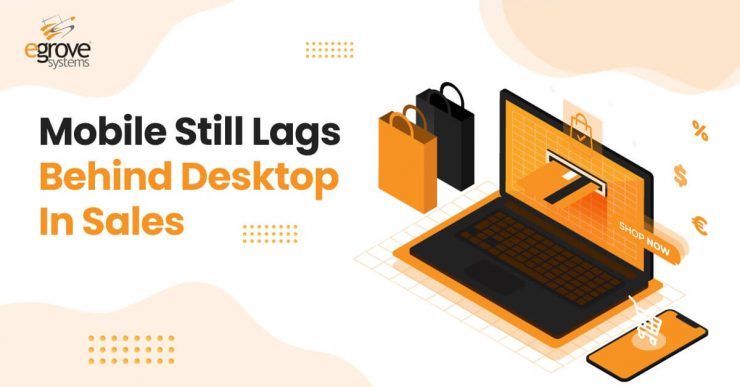As mobile devices become the dominant browsing platform, online retailers are recognizing the value of mobile sales. However, multichannel retailers and eCommerce businesses are discovering that the relationship between mobile usage and sales is more complicated than expected, even as overall Internet use trends more toward mobile.
It’s documented that mobile traffic has overtaken desktop usage; As of 2019, mobile phones represented 53.3% of traffic worldwide, and an even greater 60% of organic search traffic came from mobile devices, according to BroadbandSearch’s data. Users also spent more time on mobile devices than they do on desktops or laptops, an average of 203 minutes compared to 128 minutes per day.
But even as mobile browsing and shopping rise, evidence shows that users are relatively averse to mobile when it comes to spending:
- Bloomreach reported that holiday spending on desktop rose 60% compared to 40% on mobile from 2018 to 2019, even as mobile traffic to eCommerce stores rose 65% versus 34% on desktop.
- SaleCycle’s 2019 customer data from multiple industries found that 65% of shopping traffic went to mobile, yet only 53% of sales came from mobile.
- A survey from Ignite Visibility found that a preference for desktop sales continues in the 2020 holiday season, where 50% of customers anticipated shopping on a desktop, compared to 33% using both desktop and mobile, and only 15% using mobile phones but not desktops.
Despite the growth of mobile shopping, users seem to be less comfortable buying goods and services on mobile. As 2020 found more users at home rather than on the go, the trend is continuing. eCommerce businesses need to examine how to best utilize mobile platforms to drive sales.
Desktop Offers a Higher Conversion Rate
According to BroadbandSearch’s data, 55.9% of the time spent on websites in 2019 came from desktop, compared to 40.1% from mobile, meaning desktop still wins on engagement and time spent on the site. The desktop conversion rate across industries was 4.14 on desktop versus only 1.53 on mobile. One of the only weak areas for mobile is shopping. Online shopping apps only started to grow recently, and users are put off by ads and other frustrations in mobile shopping.
Mobile Web vs. Mobile Apps
One observable issue in mobile is the lack of customer engagement in mobile web browsing. Users spend more time on their phones within apps than on the mobile web, and mobile websites are often harder to browse than either desktop sites or apps. To this end, mobile commerce businesses try to drive business to their own apps, but users aren’t willing to install new apps for every purchase. However, shopping apps do have more success once installed; Button’s 2019 report found that mobile apps had a 157% higher conversion rate compared to mobile web stores.
Improve Your Mobile Usability and Experience
One solution to the lag in mobile sales is improving the purchasing and checkout experience. Some stores simply don’t focus on the quality of their mobile store compared to their website: 49% of eCommerce sellers reported that their top priority was their eCommerce platform, while only 19.5% said that mobile commerce was their top priority.
It’s convenient to browse mobile stores on the go, but features and usability are often limited. Improving navigation between product pages and increasing the visibility of product information helps users decide to make purchases. Streamlining checkout may be one of the best ways to increase the rate of mobile sales, as users may abandon carts if the process is too difficult. Reducing the number of checkout screens, supporting checkout through payment apps like PayPal, and offering guest checkout can encourage customers to buy more readily.
Read also :- Top 5 platforms to start an eCommerce marketplace 2020
Integrate Mobile and Desktop eCommerce
In addition to improving the quality of the mobile experience, businesses should adapt to the way people shop on both mobile and desktop. If users continue to purchase on desktop at a higher rate even as mobile shopping grows, then the user experience should promote this capability, by integrating browsing history, carts, and checkout on both platforms. Similar efforts to integrate physical stores with online shopping through buy-online, pickup-on-premises deals have been extremely successful in 2020, pointing to the viability of combining multiple sales platforms to serve more customers.
In general, re-evaluating the relationship between mobile and desktop eCommerce will improve the ability of businesses to increase their sales on mobile and convert mobile browsing traffic toward other platforms for purchases. Keep in mind the benefits and drawbacks for mobile customers and design your mobile experience to support them. Overall spending on mobile may overtake desktop spending, especially as younger customers who use mobile at a higher rate gain more spending power, but as long as this trend persists, businesses should look for ways to increase integration between mobile and desktop and make sure their mobile stores provide a great user experience.
















Add comment